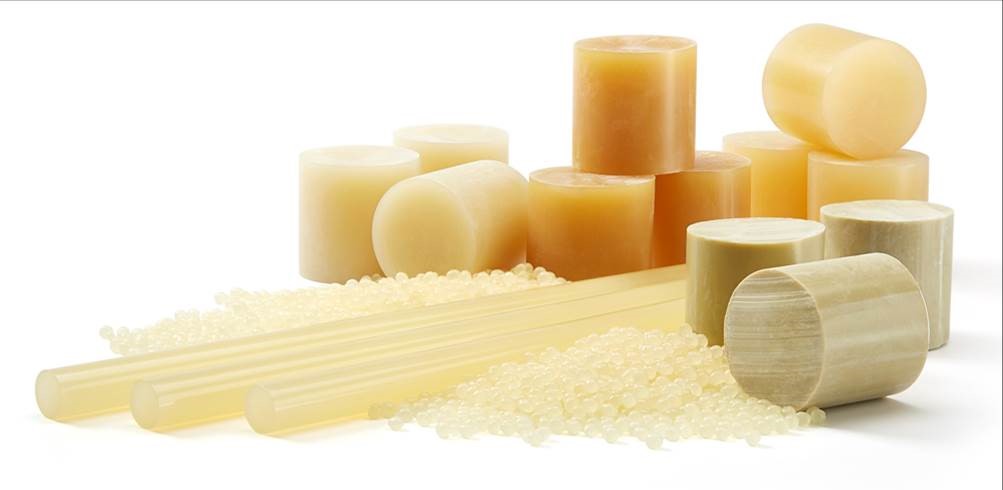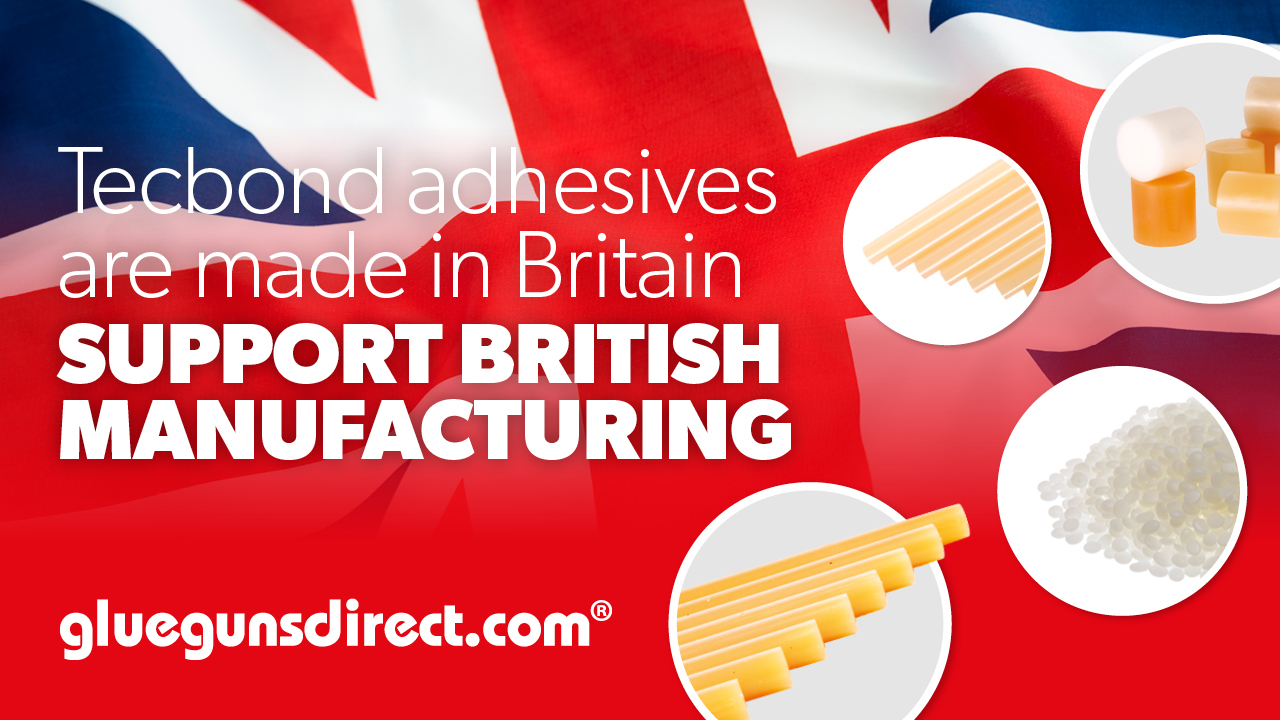Hot glue sticks are made by combining polymers and additives. The molten mixture is then shaped, cooled, and cut to size.
The polymers and additives are combined when heated – the substance is molten. It flows down long tubes through cooling containers to set. The hardened glue is then sliced to the correct length

What are polymers?
Polymers are long chains of repeated molecules and they’re a key component of most glues. The most commonly used polymers in hot glue sticks include ethylene-vinyl acetate (EVA), polyesters, polyethylene, polyamide, polyolefin and ethylene-methyl acrylate (EMA).
Different polymers give glues different properties – depending on the type of molecule and the length of the chain. These properties can include strength, flexibility, heat resistance, and viscosity. A higher polymer content generally gives the glue a higher viscosity and strength, with greater flexibility.
What additives are used to make hot glue sticks?
Each additive used to make hot melt glue will give the adhesive a different property.
Tackifying resins
Tackifying resins determine the tack and adhesive nature of the glue – how sticky it is, and how long it will stay bonded. If there’s more resin in the glue stick, it will have reduced tack and a faster setting speed. A lower resin content will give a tough, aggressive adhesive.
Waxes
The wax in an adhesive determines:
- the open speed – i.e. how long it takes to form a bond
- the set speed – ie the time taken to form a bond of sufficient strength
Wax can also influence the glue’s heat resistance. Adhesives with high wax content give a tougher bond, with higher viscosity and greater flexibility. Glues with lower wax content will bond less aggressively, set faster, and have a lower viscosity.
Plasticisers
Plasticisers can be used to give more flexibility and toughness. Glues with plasticisers can melt faster, with a lower melt viscosity. Generally, plasticisers are transparent and odourless.
Antioxidants
Antioxidants are used to protect the adhesive from degrading over time – in both solid and molten states. They don’t usually affect the physical properties of hot glue.
Biocides can also be added to prevent bacteria growing in the glue.
Depending on the glue being produced, other additives may also be used:
- Fillers – to bulk and strengthen the glue, at low cost
- UV stabilisers – to protect the adhesive from the effects of UV light
- Flame retardants
- Coloured pigments and glitter

Read here for glue gun operating and safety information. If you want further advice or have any more questions, get in touch with the team on 0161 627 1001.
Some customer FAQ’s
What are the main ingredients used in the production of hot glue sticks?
Hot glue sticks are produced by combining polymers with various additives. The selection of polymers, which include materials like ethylene-vinyl acetate (EVA) and polyethylene, among others, determines the glue’s properties such as strength, flexibility, and heat resistance. Additives like tacky resins, waxes, plasticisers, and antioxidants are used to modify these properties further, enhancing the adhesive’s tack, setting speed, flexibility, and durability.
How are hot glue sticks formed into their final shape?
The process begins with heating the mixture of polymers and additives until it becomes molten. This molten substance is then directed through cooling tubes, where it sets into a solid form. Once solidified, the material is cut into sticks of the desired length. This method ensures that the glue sticks are ready for use in hot glue guns, providing a convenient adhesive solution for various applications.
Can hot glue sticks vary in their adhesive properties, and how is this achieved?
Yes, the adhesive properties of hot glue sticks can vary significantly based on the composition and proportion of polymers and additives used in their production. For instance, the amount of tacky resin influences the stickiness and setting speed of the glue. Similarly, the wax content affects the open and set speed, as well as the glue’s heat resistance. By adjusting these components, manufacturers can produce hot glue sticks tailored for specific applications, offering a range of adhesives with different strengths, flexibilities, and other characteristics.







